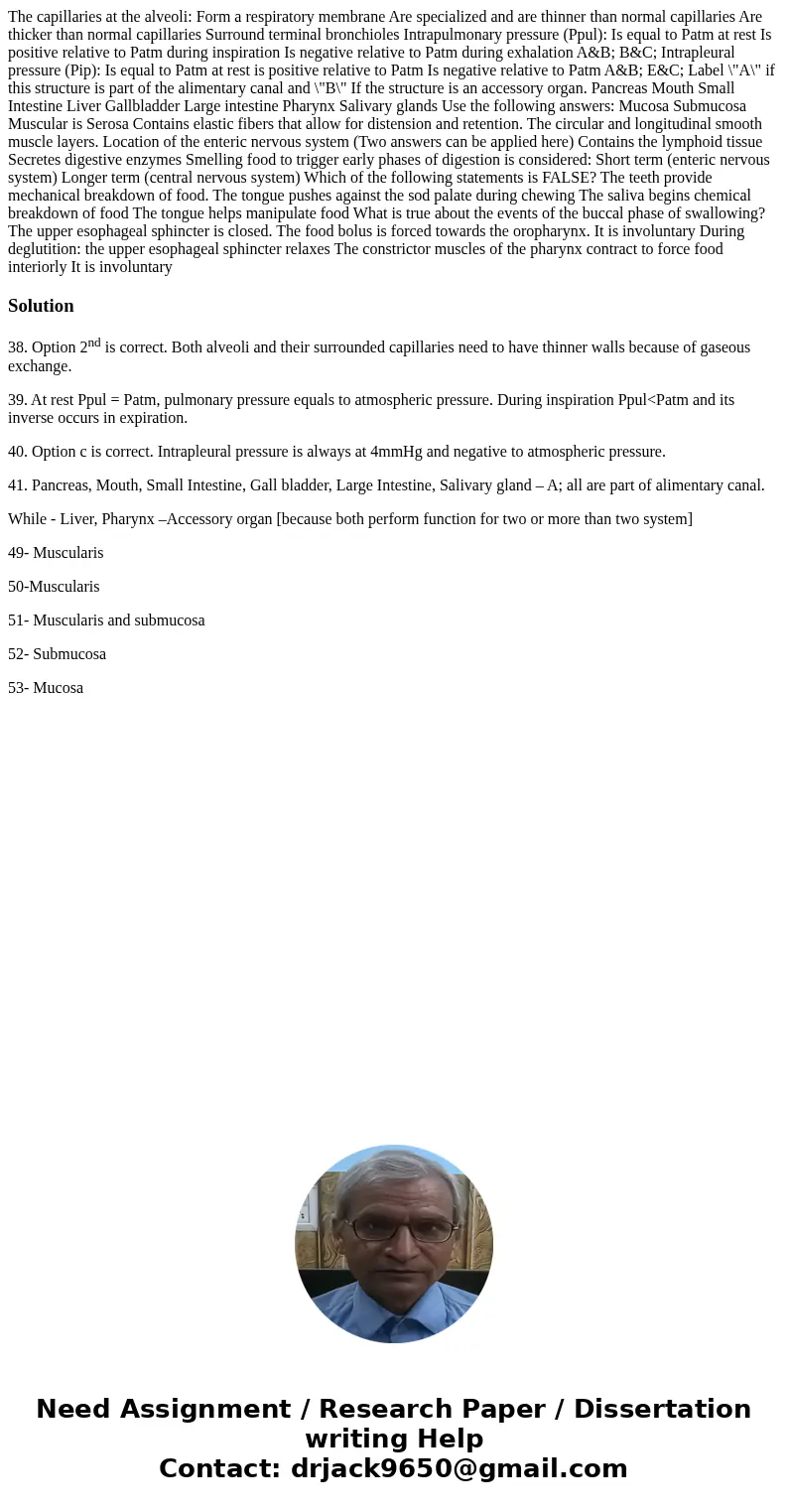The capillaries at the alveoli Form a respiratory membrane A
The capillaries at the alveoli: Form a respiratory membrane Are specialized and are thinner than normal capillaries Are thicker than normal capillaries Surround terminal bronchioles Intrapulmonary pressure (Ppul): Is equal to Patm at rest Is positive relative to Patm during inspiration Is negative relative to Patm during exhalation A&B; B&C; Intrapleural pressure (Pip): Is equal to Patm at rest is positive relative to Patm Is negative relative to Patm A&B; E&C; Label \"A\" if this structure is part of the alimentary canal and \"B\" If the structure is an accessory organ. Pancreas Mouth Small Intestine Liver Gallbladder Large intestine Pharynx Salivary glands Use the following answers: Mucosa Submucosa Muscular is Serosa Contains elastic fibers that allow for distension and retention. The circular and longitudinal smooth muscle layers. Location of the enteric nervous system (Two answers can be applied here) Contains the lymphoid tissue Secretes digestive enzymes Smelling food to trigger early phases of digestion is considered: Short term (enteric nervous system) Longer term (central nervous system) Which of the following statements is FALSE? The teeth provide mechanical breakdown of food. The tongue pushes against the sod palate during chewing The saliva begins chemical breakdown of food The tongue helps manipulate food What is true about the events of the buccal phase of swallowing? The upper esophageal sphincter is closed. The food bolus is forced towards the oropharynx. It is involuntary During deglutition: the upper esophageal sphincter relaxes The constrictor muscles of the pharynx contract to force food interiorly It is involuntary 
Solution
38. Option 2nd is correct. Both alveoli and their surrounded capillaries need to have thinner walls because of gaseous exchange.
39. At rest Ppul = Patm, pulmonary pressure equals to atmospheric pressure. During inspiration Ppul<Patm and its inverse occurs in expiration.
40. Option c is correct. Intrapleural pressure is always at 4mmHg and negative to atmospheric pressure.
41. Pancreas, Mouth, Small Intestine, Gall bladder, Large Intestine, Salivary gland – A; all are part of alimentary canal.
While - Liver, Pharynx –Accessory organ [because both perform function for two or more than two system]
49- Muscularis
50-Muscularis
51- Muscularis and submucosa
52- Submucosa
53- Mucosa

 Homework Sourse
Homework Sourse